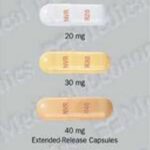Every year, thousands of children are diagnosed with attention deficit disorder (ADD) and attention deficit hyperactive disorder (ADHD). These children are usually prescribed a stimulant medication, such as Ritalin, in order to help them function normally in school and everyday tasks. According to the Drug Enforcement Administration, prescriptions for stimulant medications have increased five-hundred percent since 1991. Many children who are diagnosed with ADD or ADHD do not fully meet the criteria for the disorders and this has lead many people to believe that doctors often put the children on Ritalin for a quick fix solution. (Dunne) In fact, some researchers believe that these so called “troubled children” are a new generation of extremely gifted children called indigos.
This new generation of gifted children has become known as the indigos because they are believed to have a chakra color of indigo blue. This chakra color is an organism’s energy field and can be seen with a special camera or by some one who has trained himself to see it. When light moves slowly it produces warm colors and produces cool colors when it moves at a faster rate. A chakra color of indigo is characterized with spiritually aware and often clairvoyant people. (Virtue, 7-8) An indigo can be recognized by having certain personality characteristics and tend to be right brained. (Virtue, 97-98)
Most indigos are described as being very strong willed and headstrong, usually doing as they please. (Virtue, 19) Indigo children are very creative in the arts and typically have the knack for design, using colors, and composing music and poetry. Indigos are very intuitive and are very good at picking up on body language and other forms of communication. Indigo children crave stimulation and generally lose patience with those who are not out of the box thinkers which has lead many of them to be diagnosed with ADD or ADHD. (Virtue, 6) While many of the indigos are ADHD, not all would be classified that way, and of course not all ADHD children are indigos.
Children who are diagnosed with ADHD have shown to have a close relationship with gifted children in many ways. Many children with ADHD display a high IQ level and are good figuring out simple solutions for problems. As stated above, these children are also very creative and possess an ability to create beautiful music and artwork. Experts say that the only difference between a gifted child and an ADHD child is that gifted children finish the projects they start, whereas ADHD children leave projects unfinished.” (Virtue, 3)Some of mankind’s greatest minds including Albert Einstein, Thomas Edison and Leonardo da Vinci displayed many of the characteristics that doctors and psychiatrists would diagnose with ADD or ADHD. (Virtue, 6) What would happen if they would have been forced to take medications to try to “make them normal”?
Indigo children usually know that they are truly different and don’t feel normal in school or among peers. For this reason, indigo children isolate themselves from the rest of the world, feeling that no one understands them. Many indigo children feel so different and disconnected with the rest of the world, they become suicidal. (Virtue, 20) In school, these children are constantly told that they are different in a negative way and lose confidence in their ability to learn and do schoolwork. (Virtue, 4-5) Rather than working with these children to help them learn in a way that best suits them, teachers unknowingly often become frustrated and neglect or punish them.
In today’s society, these children diagnosed with ADD or ADHD are often placed on drugs to help them focus and function in everyday life. Many people believe that drugs are not the answer for these children and cover up the problem rather than directly address it. A wide variety of things can be done that would dramatically improve the performance of ADHD/ADD children in education. Since most of these children are right brain dominate, which is the visual center of the brain, visual aids in education would be a great help. By using pictures, colors, and videos, visual learners could learn much better. Children with ADHD/ADD require more stimulation than other children and usually enjoy doing things kinesthetically. Teachers could use active learning techniques, allowing the child to interact with the subject matter with their hands to keep them interested. One reason these children normally do very well in art classes is because they are allowed to interact and create while they are learning. (Virtue, 171-179)
Perhaps the most affective way to teach these children how to focus and perform without limiting their creativity or making them rely on drugs is through behavior modification. Behavior modification is a technique used to modify an undesirable behavior and replace it with a more desirable behavior. This technique can be very useful in teaching children to focus and building confidence especially if it is begun at an early age. A very effective type of behavior modification that can be applied in almost any situation is called a token economy. A token economy would be perhaps the most effective for a child with ADD or ADHD in the classroom. The teacher would choose some type of reward token such as a poker chip or gold star. Whenever the child is actively listening, engaging in class, and sitting still, the teacher gives the reward token to the child. Once the child has accumulating a certain amount of these tokens, he or she can then exchange them for a toy or candy the child wants. Behavior modification not only teaches the child how to focus without having to depend on drugs but it can be applied to not just in the class room, but anywhere. Parents could easily use the same technique to get the child to do his or her homework, to study, or simply finish tasks in general. (Ciccarelli & Meyer, 190, 570-572)
The symptoms of ADHD/ADD can greatly be affected by exercise and nutrition. Reducing sugar and caffeine may dramatically improve the ability for a child with ADHD/ADD to focus. Having a more balanced diet will allow energy to be released at a slower pace rather than getting quick surges of energy from unhealthy foods with additives. Some researchers believe that the symptoms from Hypoglycemia are often mistaken for ADHD. Hypoglycemia means having a low blood sugar level and those with Hypoglycemia may become irritable, agitated, angry, and have difficulty concentrating. This problem can be fixed simply by changing the diet of the person with hypoglycemia. To raise the blood sugar level, one needs to eat a more balanced diet and eliminate refined carbohydrates that would be found in candy and soft drinks. (Virtue, 143-157) Exercise is also a very important aspect to naturally treating children with ADHD. When children have an excess of energy, exercise is a great and constructive way to release this energy. Not only does exercise help to get rid of the built up energy a child may have and help him sit still in school, but it also releases serotonin and other chemicals that help fight depression. Exercise is also a very good outlet for the child to release any frustration or emotions the child may have. (Virtue, 123-127)
By applying behavior therapies such as teaching breathing, relaxation, nutrition, and especially behavior modification these children can grow to feeling successful and valuable therefore becoming a positive contribution to society.
Works Cited
Carroll, Lee, and Jan Tober. The Indigo Children. Carlsbad, California: Hay House, Inc., 1999.
Virtue, Ph. D., Doreen. The Care and Feeding of Indigo Children. Carlsbad, California: Hay House, Inc., 2001.
Ciccarelli, Saundra K., and Glenn E. Meyer. Psychology. Upper Saddle River: Pearson Education, Inc., 2006. 190, 570-572.






